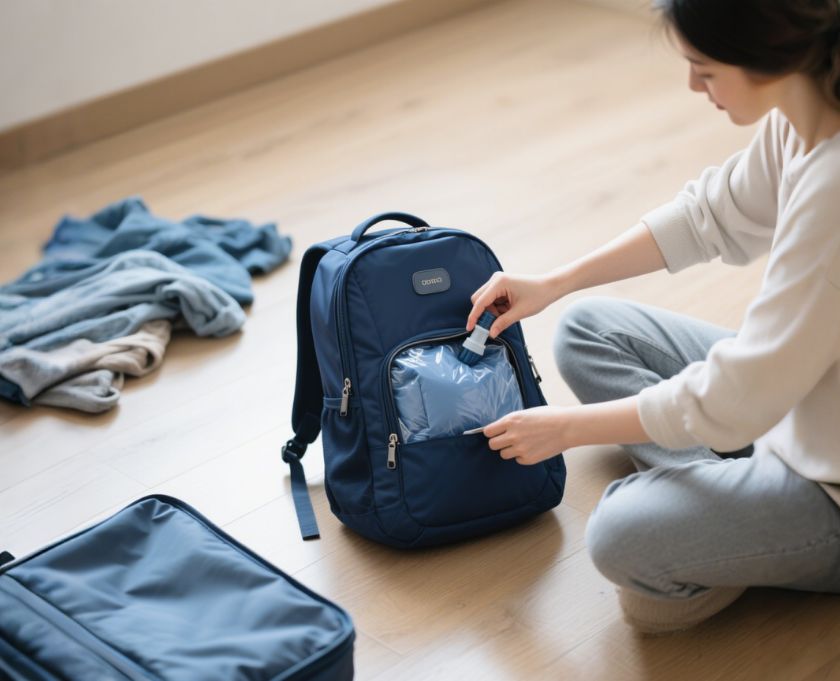Beautiful Plants For Your Interior

Travelers and outdoor enthusiasts constantly seek smarter ways to pack efficiently and save space. The vacuum compression backpack with built-in pump has become a trending solution in recent years. But is it really worth the investment? This article will walk you through the pros and cons of these innovative backpacks to help you make an informed decision.
What Is a Vacuum Compression Backpack with Built-in Pump?
A vacuum compression backpack uses air suction technology to reduce the volume of clothes and other soft items inside it. Unlike traditional compression bags, these backpacks come equipped with a built-in pump—usually manual or electric—that extracts air automatically, saving time and effort.
The integrated pump allows travelers to compress their belongings efficiently without the need for external devices like vacuum cleaners or manual pumps. This feature makes the backpack a convenient and practical choice for those who travel frequently or want to maximize storage space.
Pros of Vacuum Compression Backpacks with Built-in Pump
1. Significant Space Savings
The most obvious benefit is the drastic reduction in packing volume. By removing excess air, the backpack can compress clothes and gear up to 50-70%, allowing travelers to carry more with less bulk.
2. Time and Effort Efficient
Manual vacuum compression usually requires an external pump or vacuum cleaner. Having a built-in pump eliminates the hassle, making packing faster and more convenient. This is especially helpful for travelers in a hurry.
3. Protects Clothes from Wrinkles and Moisture
Compression helps stabilize clothing items, reducing movement inside the backpack that causes wrinkles. Many vacuum backpacks also feature airtight sealing that keeps moisture, dust, and odors out.
4. Versatile for Various Uses
Besides travel, vacuum compression backpacks are useful for storing seasonal clothing, camping gear, or emergency kits. The built-in pump feature enhances usability across different scenarios.
5. Reduces Physical Strain
A compressed load is easier to manage and carry. The backpack’s ergonomic design combined with smaller packing size can reduce back and shoulder strain.
Cons of Vacuum Compression Backpacks with Built-in Pump
1. Higher Cost Compared to Traditional Backpacks
The added technology of a built-in pump increases manufacturing costs. These backpacks are typically priced higher than conventional models, which might be a deterrent for budget-conscious buyers.
2. Potential Pump Malfunctions
Since the pump is integrated, any malfunction can make the compression feature unusable. Repair or replacement might require specialized service, which is inconvenient for frequent travelers.
3. Heavier Weight
The built-in pump mechanism adds weight to the backpack itself, which could offset some of the packing space benefits, especially for ultra-light travelers.
4. Limited Pump Power
Most built-in pumps are manual or low-powered electric versions. They may not achieve the same compression levels as dedicated vacuum pumps, resulting in less efficient packing.
5. Requires Proper Maintenance
To maintain airtight seals and pump efficiency, users need to regularly check zippers, valves, and pump components. Neglect can lead to loss of compression and reduced backpack lifespan.
Is a Vacuum Compression Backpack with Built-in Pump Right for You?
These backpacks suit frequent travelers who value packing efficiency and convenience. If you often deal with bulky clothing or need quick packing solutions, the built-in pump feature can save time and effort.
However, if you prioritize lightweight gear or travel sporadically, the added weight and cost might outweigh the benefits. For budget travelers, traditional compression bags or backpacks could be more practical.
Tips for Choosing and Using Your Vacuum Compression Backpack
- Check Pump Type: Decide between manual or electric built-in pumps based on your travel style and power availability.
- Test Airtight Seals: Before purchase, verify the backpack’s sealing mechanism to ensure durability.
- Pack Strategically: Arrange clothes evenly for optimal compression and minimal wrinkles.
- Regular Maintenance: Clean and inspect pump and seals to prolong backpack life.
- Consider Size: Choose the backpack size based on trip length and packing needs.
Conclusion
Vacuum compression backpacks with built-in pumps offer a unique blend of space-saving convenience and innovative packing technology. While they come with a higher price tag and some maintenance requirements, their benefits can greatly improve travel efficiency and comfort.
If you frequently travel with bulky gear or value quick and effective packing, investing in one of these backpacks could be a game-changer. However, weigh the pros and cons carefully to ensure it fits your specific needs and travel habits.